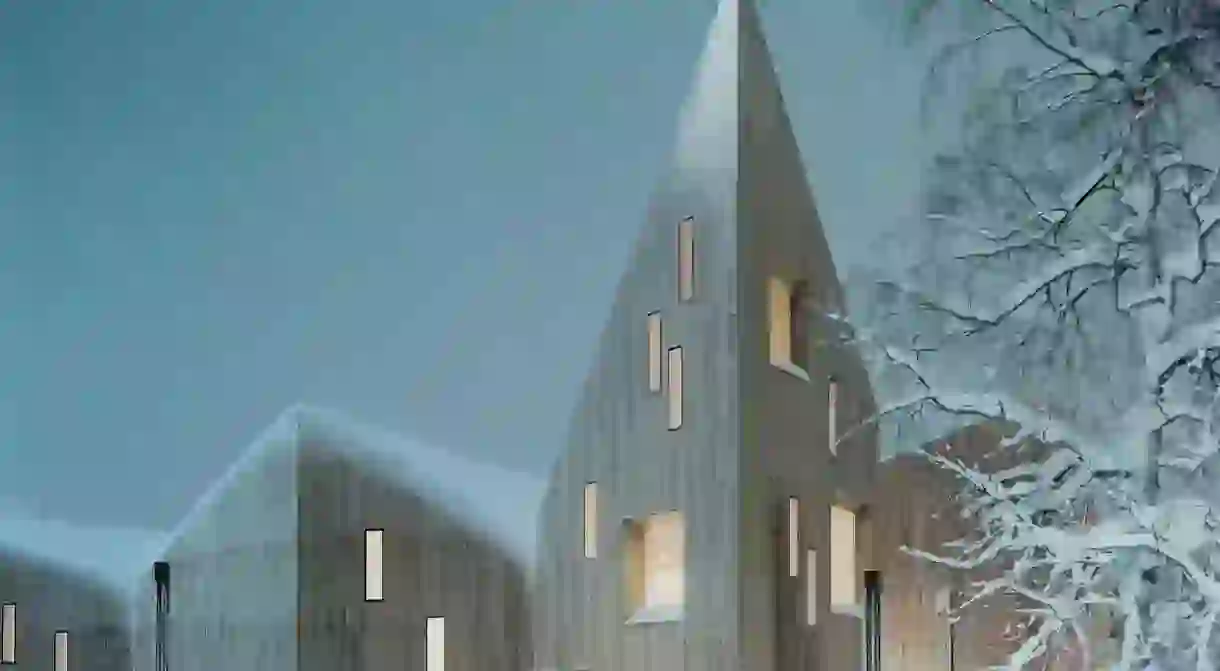Romsdal Folk Museum’s Geometric Design Is Pine Perfection

Yet another reason why Norway is at the forefront of socially-conscious, sustainable design.
Reiulf Ramstad Architects (RRA), an independent Oslo-based architectural firm, recently won an Architizer A+Award (2017) for their sustainable pine creation: The Romsdal Folk Museum. Located in Molde, Norway, the structure is a perfect example of how architecture can be at once awe-inspiring, while still firmly rooted in simplicity of form and materials.

Primarily made from pine, the Romsdal Folk Museum’s eco-conscious and rational design speaks to Norway’s national policy to aim for a more sustainable future. “Our intention in this project was to let the structure signal its meaning and function through an architectural expression and the use of local materials,” says the architects in a press release. “The scale of the building refers to the urbanity and morphology of the town [of Molde].”

The museum’s layout mirrors the emphasis on connectivity of the urban environment by “linking different surrounding areas in an overall plan where all circulation is linked in a unified structure.” This strategy signifies, according to the architects, “an open and progressive attitude that makes diverse utilization possible.”

The exterior of the museum features incredible angular peaks made from solid pine timber and the occasional steel beam, and the interior and exterior walls are covered with maintenance-pine relief tempered with bio-based oil. The interior remains clear and flexible, and utilizes various gradations of high-energy glass in the windows to filter the natural lighting. Other spaces act as black boxes, where artificial light can be completely controlled.

“The Romsdal Folk Museum is a great example of strategic use of low-tech building solutions…[and] is built using Norwegian timber technology and acts as a hub for cultural development,” says Reiulf Ramstad Architects. “The architectural form brings together the region’s folk culture and the area’s characteristic landscape qualities in a larger composition. The range of perspectives and activities ensures a broad audience, with the museum becoming a living centre for the exploration of the region’s history, contemporary culture, and future.”















